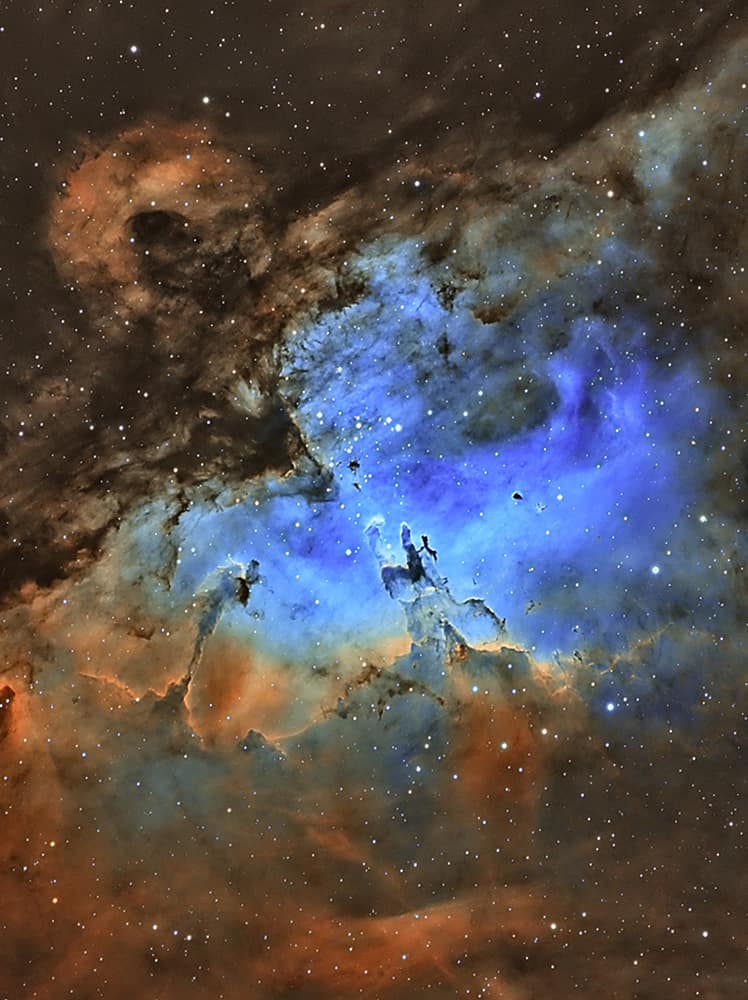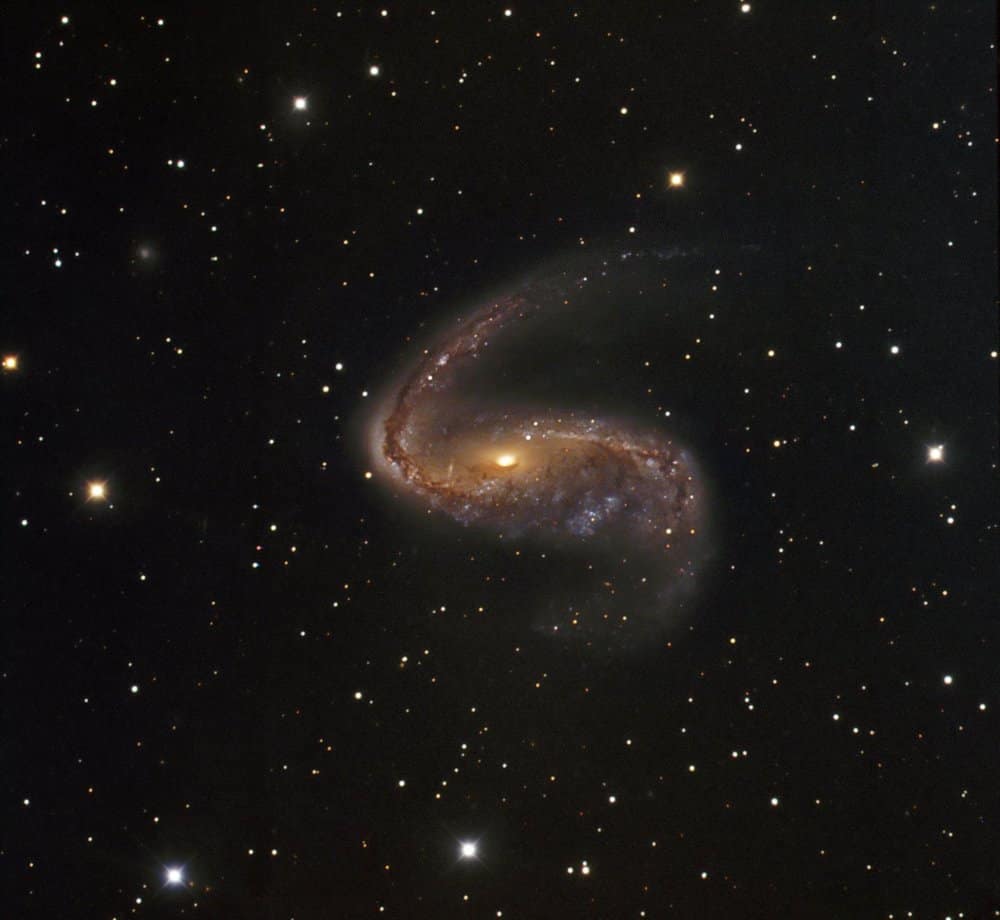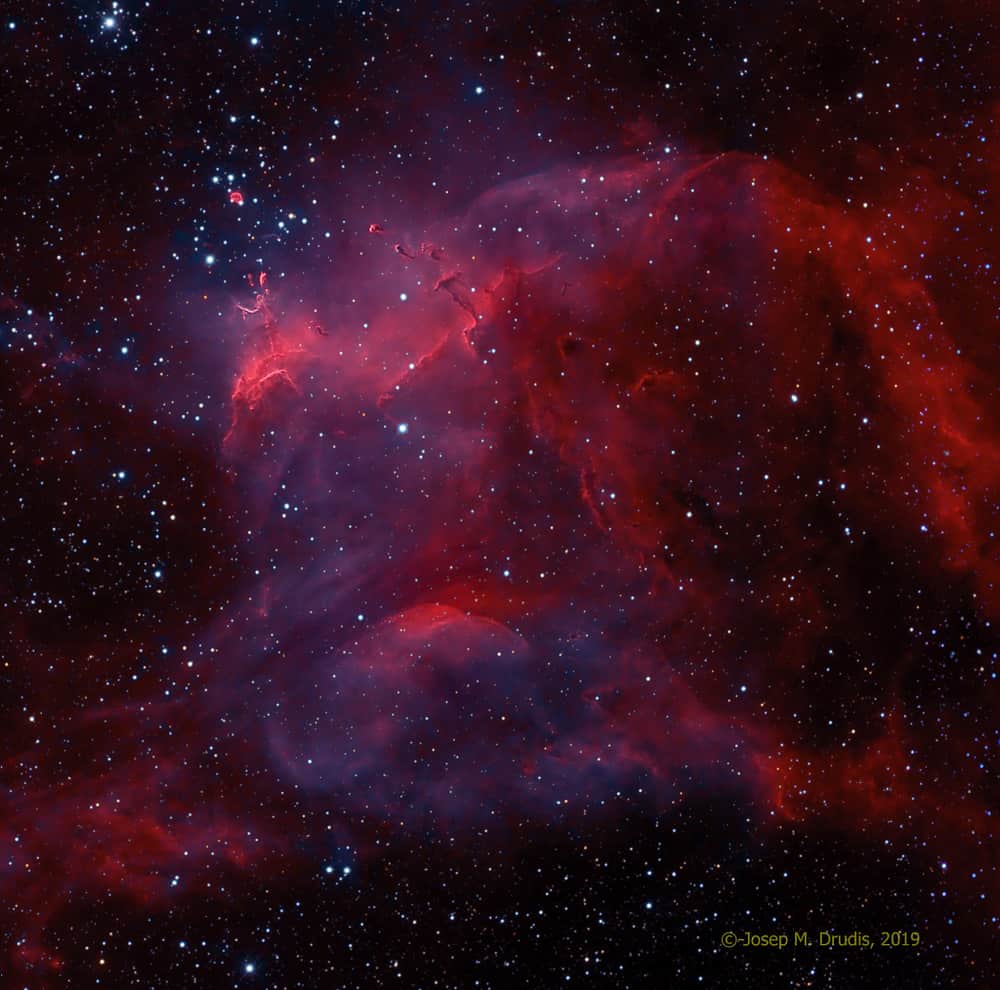Blog
Local History through the music of Gordon Lightfoot!
more...44 years ago the Edmund Fitzgerald sank in Lake Superior.
There have been many other shipwrecks on Lake Superior over the years. Many other mammoth November storms. Many other lives lost. But thanks in large part to singer Gordon Lightfoot, one shipwreck stands above the rest in the Great Lakes’ collective memory: the Edmund Fitzgerald. Sunday, Nov. 10, marks the 44th anniversary of the sinking of the Fitzgerald in a November gale on eastern Lake Superior with the loss of all 29 men aboard — a tragedy memorialized by Lightfoot in the now-iconic song he released the following year.
As the song recounts, the “Mighty Fitz” had left Superior on Nov. 9 with a load of iron ore pellets, and made its way across Lake Superior as a storm intensified. The Fitzgerald spent hours battling wind and waves, making its way toward Whitefish Point. On the evening of Nov. 10, 1975, the captain of the Fitzgerald, Ernest McSorley, radioed to the neaby freighter Arthur M. Anderson that the Fitzgerald crew was, quote, “holding our own.” Soon after, the Fitzgerald sank without giving a distress signal. On its final voyage across Lake Superior, the Fitzgerald passed several miles offshore from Split Rock Lighthouse, on Minnesota’s North Shore. And each Nov. 10 since 1985, the 10th anniversary of the wreck, the lighthouse has hosted a memorial ceremony and beacon lighting.

more...
Mercury will pass over Sun tomorrow morning & we should be able to see it here in Minnesota.
Mercury – the innermost planet of our solar system – will transit the sun on November 11, 2019. In other words, Mercury will pass directly in front of the sun and be visible through telescopes with solar filters as a small black dot crossing the sun’s face. It’ll be visible in part from most of Earth’s globe. The entire transit is visible from South America, eastern North America, and far-western Africa. The last transit of Mercury was in 2016. The next one won’t be until 2032.
Be aware that this is a morning event on November 11, according to U.S. clocks. Mercury will come into view on the sun’s face around 7:36 a.m. Eastern Standard Time (12:36 UTC; translate UTC to your time) on November 11. It’ll make a leisurely journey across the sun’s face, reaching greatest transit (closest to sun’s center) at approximately 10:20 a.m. EST (15:20 UTC) and finally exiting around 1:04 p.m. EST (18:04 UTC). The entire 5 1/2 hour path across the sun will be visible across the U.S. East – with magnification and proper solar filters – while those in the U.S. West can observe the transit already in progress after sunrise.

more...
The Eagle Nebula (M16) doesn’t look its usual red in this image. That’s because the photographer shot through Sulfur-II, Hydrogen-alpha, and Oxygen-III filters, and then assigned colors that would bring out details best to each filter. M16 is famous for housing the feature known as the Pillars of Creation. The Eagle Nebula is part of a diffuse emission nebula, or H II region, which is catalogued as IC 4703. This region of active current star formation is about 7000 light-years distant. A spire of gas that can be seen coming off the nebula in the northeastern part is approximately 9.5 light-years or about 90 trillion kilometers long.

Hubert Laws (born November 10, 1939) is an American flutist and saxophonist with a career spanning over 50 years in jazz, classical, and other music genres. Considering the artistry of the late Eric Dolphy and the popularity of the late Herbie Mann, Laws is notably in the company of the most recognized and respected jazz flutists in the history of jazz, (also the most imitated). Laws is one of the few classical artists who has also mastered jazz, pop, and rhythm-and-blues genres, moving effortlessly from one repertory to another. Hubert Laws, Jr. was born November 10, 1939, in the Studewood section of Houston, Texas, the second of eight children to Hubert Laws, Sr. and Miola Luverta Donahue.
While at Juilliard, Laws played flute during the evenings with several acts, including Mongo Santamaría, 1963–67 and in 1964 began recording as a bandleader for Atlantic, and he released the albums The Laws of Jazz, Flute By-Laws, and Laws Cause. He appeared on albums by Ashford & Simpson, Chet Baker, George Benson, and Moondog. He recorded with his younger brother Ronnie on the album The Laws in the early 1970s. He played flute on Gil Scott-Heron‘s 1971 album Pieces of a Man, which featured the jazz poem “The Revolution Will Not Be Televised”. During the 1970s he was a member of the New York Jazz Quartet. He can also be heard playing tenor saxophone on some records from the 1970s.
In 1980 he had a minor hit with the tune “Family” on CBS records played on many UK soul radio stations.
In the 1990s Laws resumed his career, playing on the 1991 Spirituals in Concert recording by opera singers Kathleen Battle and Jessye Norman. His albums on the Music Masters Jazz label—My Time Will Come in 1990 and, more particularly, Storm Then Calm in 1994—are regarded by critics as a return to the form he exhibited on his early 1970s albums. He also recorded a tribute album to jazz pianist and pop-music vocalist Nat King Cole, Hubert Laws Remembers the Unforgettable Nat King Cole, which received critical accolades. Among the many artists he has played and recorded with are Herbie Hancock, McCoy Tyner, Nancy Wilson, Quincy Jones, Paul McCartney, Paul Simon, Aretha Franklin, Ella Fitzgerald, Sarah Vaughan, Lena Horne, Leonard Bernstein, James Moody, Jaco Pastorius, Sérgio Mendes, Bob James, Carly Simon, George Benson, Clark Terry, Stevie Wonder, J. J. Johnson, and The Rascals. In 1998, Laws recorded with Morcheebafor the Red Hot Organization‘s compilation album Red Hot + Rhapsody, a tribute to George Gershwin, which raised money for various charities devoted to increasing AIDS awareness and fighting the disease.
https://www.youtube.com/watch?v=sdetER25-Mw
more...Russell Charles Means (November 10, 1939 – October 22, 2012) was an Oglala Lakota activist for the rights of American Indian people, libertarianpolitical activist, actor, writer and musician, who became a prominent member of the American Indian Movement (AIM) after joining the organization in 1968 and helped organize notable events that attracted national and international media coverage.
Means was active in international issues of indigenous peoples, including working with groups in Central and South America and with the United Nations for recognition of their rights. He was active in politics at his native Pine Ridge Indian Reservation and at the state and national level.
Beginning an acting career in 1992, he appeared on numerous television series and in several films, including The Last of the Mohicans and released his own music CD. He published his autobiography Where White Men Fear to Tread in 1995. Means died in 2012, less than a month before his 73rd birthday. Means was born in Porcupine, South Dakota, on the Pine Ridge Indian Reservation, to Theodora Louise Feather and Walter “Hank” Means. His mother was a Yankton Dakota from Greenwood, South Dakota and his father, an Oglala Lakota. As well as Russell, the family had two other boys (William “Bill” and Warren) and three girls (Madonna, Mabel Ann and Phyllis). He was given the name Wanbli Ohitika by his mother, which means “Brave Eagle” in the Lakota language.
Means participated in the 1969 Alcatraz occupation. He had been there once before, to occupy it for 24 hours under the lead of his father, Walter “Hank” Means, and a few other Lakota men in March 1964 (Means’ father died in January 1967).
On Thanksgiving Day 1970, Means and other AIM activists staged their first protest in Boston: they seized the Mayflower II, a replica ship of the Mayflower, to protest the Puritans’ and United States’ mistreatment of Native Americans. In 1971 Means was one of the leaders of AIM’s takeover of Mount Rushmore, a federal monument. Rushmore is within the Black Hills, an area sacred to the Lakota tribe.
In November 1972, he participated in AIM’s occupation of the Bureau of Indian Affairs (BIA) headquarters in Washington, D.C. to protest abuses. Many records were taken or destroyed, and more than $2 million in damages was done to the building.
In 1973, Dennis Banks and Carter Camp led AIM’s occupation of Wounded Knee, which became the group’s most well-known action. Means appeared as a spokesman and prominent leader. The armed standoff of more than 300 Lakota and AIM activists with the Federal Bureau of Investigation (FBI) and state law enforcement lasted for 71 days. A visiting Cherokee from North Carolina and an Oglala Lakota activist from Pine Ridge Reservation were killed in April.
more...
Andrew Charles Cyrille (born November 10, 1939) is an American avant-garde jazz drummer. Throughout his career, he has performed both as a leader and a sideman in the bands of Walt Dickerson and Cecil Taylor, among others.
Cyrille was born on November 10, 1939, in Brooklyn, New York into a Haitian family. He began studying science at St. John’s University, but was already playing jazz in the evenings and switched his studies to the Juilliard School. His first drum teachers were fellow Brooklyn-based drummers Willie Jones and Lenny McBrowne; through them, Cyrille met Max Roach. Nonetheless, Cyrille became a disciple of Philly Joe Jones, who in some performances such as Time Waits used Cyrille’s drum kit.
His first professional engagement was as an accompanist of singer Nellie Lutcher, and he had an early recording session with Coleman Hawkins.Trumpeter Ted Curson introduced him to pianist Cecil Taylor when Cyrille was 18.
more...Hyman Paul Bley, CM (November 10, 1932 – January 3, 2016) was a Canadian pianist known for his contributions to the free jazz movement of the 1960s as well as his innovations and influence on trio playing and his early live performance on the Moog and Arp audio synthesizers. Bley was a long-time resident of the United States. His music has been described by Ben Ratliff of the New York Times as “deeply original and aesthetically aggressive”. Bley’s prolific output includes influential recordings from the 1950s through to his solo piano records of the 2000s.
Bley was born in Montreal, Quebec, on November 10, 1932. As a teenager he played with touring American bands, including Al Cowan’s Tramp Band. In 1949, when Bley was starting his senior year of high school, Oscar Peterson asked Bley to fulfill his contract at the Alberta Lounge in Montreal. The next year Bley left Montreal for New York City and Juilliard.
In 1951, on a return trip to Montreal, Bley organized the Jazz Workshop with a group of Montreal musicians. In 1953 Bley invited the bebop alto saxophonist and composer Charlie Parker to the Jazz Workshop, where he played and recorded with him. When Bley returned to New York City he hired Jackie McLean, Al Levitt and Doug Watkins to play an extended gig at the Copa City on Long Island. From the early 1950s until 1960 Paul did a series of trios with Al Levitt and Peter Ind; recordings of this trio in 1954 were included in the Mercury album “Paul Bley”. In 1953 the Shaw Agency booked Bley and his trio to tour with Lester Young, billed as “Lester Young and the Paul Bley Trio” in ads. He also performed with tenor saxophonist Ben Webster at that time. He then conducted for bassist Charles Mingus on the Charles Mingus and His Orchestra album. Additionally, in 1953, Mingus produced the Introducing Paul Bley album for his label, Debut Records with Mingus on bass and drummer Art Blakey. (In 1960 Bley recorded again with the Charles Mingus Group.)
In 1954 Bley received a call from Chet Baker inviting him to play opposite Baker’s quintet at Jazz City in Hollywood, California for the month of March. This was followed by a tour with singer Dakota Staton.
Down Beat Magazine interviewed Bley for its July 13, 1955 issue. The prescient title of the article read, “PAUL BLEY, Jazz Is Just About Ready For Another Revolution”. The article, reprinted in Down Beat’s 50th Anniversary edition, quoted Bley as saying, “I’d like to write longer forms, I’d like to write music without a chordal center.”
Bley’s trio with Hal Gaylor and Lennie McBrowne toured across the US in 1956, including a club in Juarez. Mexico. The tour culminated with an invitation to play a 1956 New Year’s Eve gig at Lucile Ball and Desi Arnez‘s home in Palm Springs. During the evening, Bley collapsed on the bandstand with a bleeding ulcer and Lucy immediately took him to the Palm Springs hospital where she proceeded to pay for all of his medical care. Bley, who had met Karen Borg while she was working as a cigarette girl at Birdland in NYC, married her after she came out to meet him in Los Angeles, where she became Carla Bley.
https://www.youtube.com/watch?v=m16-o0Gi47Q
more...George Carter Buford, Jr. (November 10, 1929 – October 11, 2011), known as Mojo Buford, was an American blues harmonica player best known for his work in Muddy Waters‘s band. Buford relocated from Hernando, Mississippi, to Memphis, Tennessee, in his youth, where he studied the blues. He relocated to Chicago in 1952,forming the Savage Boys, which eventually was known as the Muddy Waters, Jr. Band. They substituted for Waters at local nightclubs while he was touring.
Buford first played in Waters’s backing band in 1959, replacing Little Walter, but in 1962 moved to Minneapolis to front his own band and to record albums. In Minneapolis he gained the nickname Mojo, because of audiences requesting him to perform his cover version of “Got My Mojo Working.” Buford returned to Waters’s combo in 1967 for a year, replacing James Cotton. He had a longer tenure with Waters in the early 1970s and returned for the final time after Jerry Portnoy departed to form the Legendary Blues Band. He also recorded for the Mr. Blues label. These recordings were later reissued by Rooster Blues, Blue Loon Records, and the British JSP label. Buford died on October 11, 2011, at the age of 81, in Minneapolis, after a long hospitalization.
more...The distorted galaxy NGC 2442, also known as the Meathook Galaxy, is located some 50 million light-years away in the constellation of Volans (the Flying Fish). The galaxy is 75 000 light-years wide and features two dusty spiral arms extending from a pronounced central bar that give it a hook-like appearance, hence its nickname. The galaxy’s distorted shape is most likely the result of a close encounter with a smaller, unseen galaxy.

Jesse Davis (born September 11, 1965) is an American jazz saxophonist. Davis began as a student in Ellis Marsalis‘s New Orleans Center for Creative Arts. After graduating, Davis embarked on a productive jazz career, recording 8 albums on the Concord Jazz label, alongside collaborations with such artists as Jack McDuff and Illinois Jacquet. Davis has studied music at Northeastern Illinois University, and in 1989 he received a “Most Outstanding Musician award” from Down Beat magazine.
more...Mary Allin Travers (November 9, 1936 – September 16, 2009) was an American singer-songwriter and member of the folk music group Peter, Paul and Mary, along with Peter Yarrow and Paul Stookey. Peter, Paul and Mary was one of the most successful folk music groups of the 1960s. Unlike most folk musicians of the early 1960s who were a part of the burgeoning music scene in New York City’s Greenwich Village, Travers grew up there. A contralto, Travers released five solo albums in addition to her work with Peter, Paul and Mary.
Mary Travers was born in Louisville, Kentucky, to Robert Travers and Virginia Coigney, both journalists and active organizers of The Newspaper Guild, a trade union. In 1938, the family moved to Greenwich Village in New York City. Mary attended the progressive Little Red School House, where she met musical icons like Pete Seeger and Paul Robeson. Robeson sang her lullabies. Travers did not graduate from high school; she left school in the 11th grade to become a member of the Song Swappers folk group.
more...Milton Mesirow (November 9, 1899 – August 5, 1972), better known as Mezz Mezzrow, was an American jazz clarinetist and saxophonist from Chicago, Illinois. He is well known for organizing and financing historic recording sessions with Tommy Ladnier and Sidney Bechet. He also recorded a number of times with Bechet and briefly acted as manager for Louis Armstrong. Mezzrow is equally well remembered as a colorful character, as portrayed in his autobiography, Really the Blues (which takes its title from a Bechet composition), co-written with Bernard Wolfe and published in 1946.
Mezzrow organized and took part in recording sessions involving black musicians in the 1930s and 1940s, including Benny Carter, Teddy Wilson, Frankie Newton, Tommy Ladnier and Sidney Bechet. Mezzrow’s 1938 sessions for the French jazz critic Hugues Panassie involved Bechet and Ladnier and helped spark the “New Orleans revival”.
In the mid-1940s Mezzrow started his own record label, King Jazz Records, featuring himself with groups, usually including Sidney Bechet and often including the trumpeter Oran “Hot Lips” Page. He also played on six recordings by Fats Waller.
He appeared at the 1948 Nice Jazz Festival, following which he made his home in France and organized many bands that included French musicians like Claude Luter and visiting Americans, such as Buck Clayton, Peanuts Holland, Jimmy Archey, Kansas Fields and Lionel Hampton. With ex-Basie trumpeter Buck Clayton, he made a recording of the Louis Armstrong’s “West End Blues” in Paris in 1953.
more...NGC 3572. A beautiful emission nebula and star cluster in far southern skies, the region is often overlooked by astroimagers in favor of its brighter neighbor, the nearby Carina Nebula. Stars from NGC 3572 are toward the upper left in the telescopic frame that would measure about 100 light-years across at the cluster’s estimated distant of 9,000 light-years. The visible interstellar gas and dust is part of the star cluster’s natal molecular cloud. Dense streamers of material within the nebula, eroded by stellar winds and radiation, clearly trail away from the energetic young stars. They are likely sites of ongoing star formation with shapes reminiscent of the cosmic Tadpoles of IC 410 better known to northern skygazers. In the coming tens to hundreds of millions of years, gas and stars in the cluster will be dispersed though, by gravitational tides and by violent supernova explosions that end the short lives of the massive cluster stars.

Bonnie Lynn Raitt (born November 8, 1949) is an American blues singer, guitarist, songwriter, and activist.
During the 1970s, Raitt released a series of roots-influenced albums that incorporated elements of blues, rock, folk and country. In 1989, after several years of critical acclaim but little commercial success, she had a major hit with the album Nick of Time. The following two albums, Luck of the Draw(1991) and Longing in Their Hearts (1994), were also multimillion sellers, generating several hit singles, including “Something to Talk About“, “Love Sneakin’ Up on You“, and the ballad “I Can’t Make You Love Me” (with Bruce Hornsby on piano).
Raitt has received 10 Grammy Awards. She is listed as number 50 in Rolling Stone‘s list of the “100 Greatest Singers of All Time” and number 89 on the magazine’s list of the “100 Greatest Guitarists of All Time”. Australian Country Music Artist Graeme Connors has said, “Bonnie Raitt does something with a lyric no one else can do; she bends it and twists it right into your heart.”
In the summer of 1970, she played with her brother David on stand up bass with Mississippi Fred McDowell at the Philly Folk Festival as well as Opening for John Hammond at the Gaslight Cafe in New York, she was seen by a reporter from Newsweek, who began to spread the word about her performance. Scouts from major record companies were soon attending her shows to watch her play. She eventually accepted an offer from Warner Bros., who soon released her debut album, Bonnie Raitt, in 1971. The album was warmly received by the music press, with many writers praising her skills as an interpreter and as a bottleneck guitarist; at the time, few women in popular music had strong reputations as guitarists.
While admired by those who saw her perform, and respected by her peers, Raitt gained little public acclaim for her work. Her critical stature continued to grow but record sales remained modest. Her second album, Give It Up, was released in 1972 to positive reviews. Though many critics still regard it as her best work, it did not change her commercial fortunes. 1973’s Takin’ My Time was also met with critical acclaim, but these notices were not matched by the sales.
Raitt began to receive greater press coverage, including a 1975 cover story for Rolling Stone, but with 1974’s Streetlights, reviews for her work were becoming increasingly mixed. By this point, Raitt was already experimenting with different producers and different styles, and she began to adopt a more mainstream sound that continued through 1975’s Home Plate. In 1976, Raitt made an appearance on Warren Zevon‘s eponymous album.
more...More Posts
- Daily Roots The Heptones
- Rhythm Roots Workshop Tasks Unlimited 9-22-22
- Happy Autumnal Equinox 2022
- Cosmos NGC 7331
- Kofi Burbridge
- Oliver “Tuku” Mtukudzi
- King Sunny Adé
- Jalaal Zulfonun
- World Drumming Babatunde Olatunji
- Daily Roots Freddy McKay
- Cosmos Barnard 33
- Leonard Cohen
- Sunny Murry
- Tommy Potter
- Slam Stewart
- STOP THE WAR World Music KOZAK SYSTEM
- Daily Roots The Africans
- Cosmos NGC 3576
- Red Mitchell
- Eric Gale